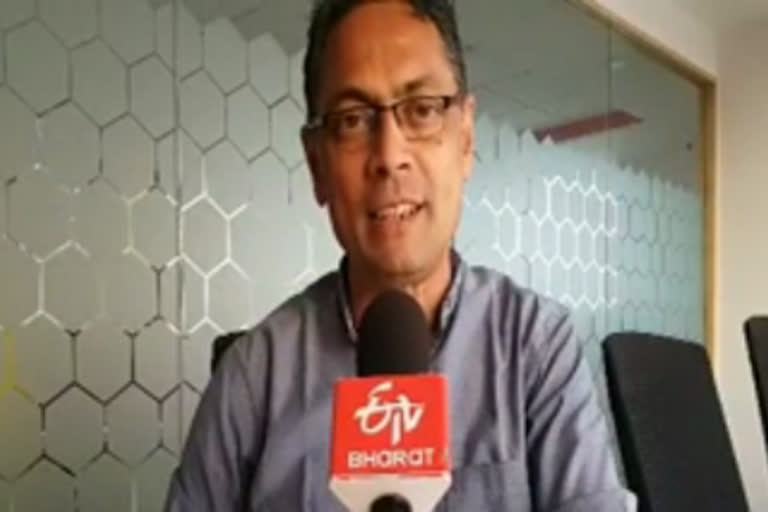Bengaluru: The Central Government in its budget made several announcements regarding reforms like privatisation of IDBI Bank and two Public Sector Banks, setting up of Bad Bank, disinvestment in LIC, privatisation of one General Insurance Company, allowing FDI in insurance sector up to 74 percent, aggressive disinvestment and sale of Public Sector Undertakings (PSUs).
"All these measures are retrograde in nature and need to be protested and opposed," said United Forums of Bank Unions Karnataka state convener S K Srinivas.
Speaking to ETV Bharat, Srinivas said the objective of bank nationalisation was to mobilise savings from the widest segment of depositors and to make credit available to the widest segment of producers.
July 19 is observed as Bank Nationalisation Day in accordance with the nationalisation of 14 commercial banks in 1969. Six banks were nationalised on March 15, 1980. The Regional Rural Banks were established in 1975.
Also read: Activist Medha Patkar slams central govt, urges Bengal people not to vote for BJP
He further said that in the pre-nationalisation period failure of banks was a common occurrence. From 1947 to 1969, 550 private banks failed. "Depositors largely lost their entire savings. After 1969 also, 38 private banks including Global Trust Bank, Centurion Bank, Times Bank, Bank of Punjab, Lakshmi Vilas Bank have failed. At the same time, it is noteworthy that none of the Public Sector Banks has collapsed, rather they have protected the interests of the depositors by taking over the failed private banks," Srinivas pointed out.
During the global banking collapse of 2008, the Indian banking system remained unscathed. "We have witnessed how the Governments bailed out the giant American and European Banks which were sinking by using funds from the exchequer. Before that, Japanese Banks in the 1980s, Korean Banks in the 1990s and in a recent case, Italian Banks in 2017 were similarly bailed out," said Srinivas who is also an officer at SBI.
Also read: PM Modi to interact with CMs on Wednesday
In June 1969, there were 8,961 bank branches and the number increased to 32,417 in 1980, then to 60,220 in 1991 and to 1,46,904 in 2021. The aggregate deposits of the banking sector had gone up from Rs 4,700 crore in 1969 to Rs 2,77,235 crore in 1993 and by the end of January 2021, it stands at Rs. 1,47,98,000 crores.
After nationalisation, the inflow of deposits from and outflow of credit to the rural sector increased phenomenally. Banks had to provide 40 per cent of net credit to priority sectors which included small scale industries, cottage industries, small and marginal farmers, artisans, small traders, self-employed persons, retailers and entrepreneurs. The share of priority sector advances went up from 22 percent in 1972 to 45 percent in 1980. Between December 1972 to June 1983, there were 21 million new bank loans, of which 93 percent were within credit limits of Rs. 10,000-00 or less.
Also read: Parliamentary panel questions legality of new guidelines for OTT, social media platforms
"From this, it becomes very clear as to which class benefited from bank credit. There is a move now to merge these banks which contributed immensely to poverty alleviation and employment generation programmes and then to transfer their ownership to the private sector," he added.
Recently, in response to a query under RTI, the Reserve Bank of India has informed writing off a sum of Rs. 68,607 crore by different banks as of September 30, 2019 due bad debt incurred from top 50 wilful defaulters that include fugitives like Vijay Mallya, Nirav Modi and Mehul Choksy.
RBI figures reveal that 50 percent of the officially acknowledged accumulated NPA amounting to Rs. 4.5 lakh crore is due to only a hundred big borrowers, said Srinivas who is also a national bank union leader.
"Instead of taking tough measures to recover dues from these big borrowers, banks are not being sought to be sold to such people paving the way for loot of public assets. Privatisation means handing over the financial sector to Indian and foreign capitalists. It will lead to scope for loot of savings of the common people of the country, attack on the interests of the depositors, attack on the social measures like job opportunities and reservation, closure of branches and more than anything else, depriving the common man of banking services," he said.



